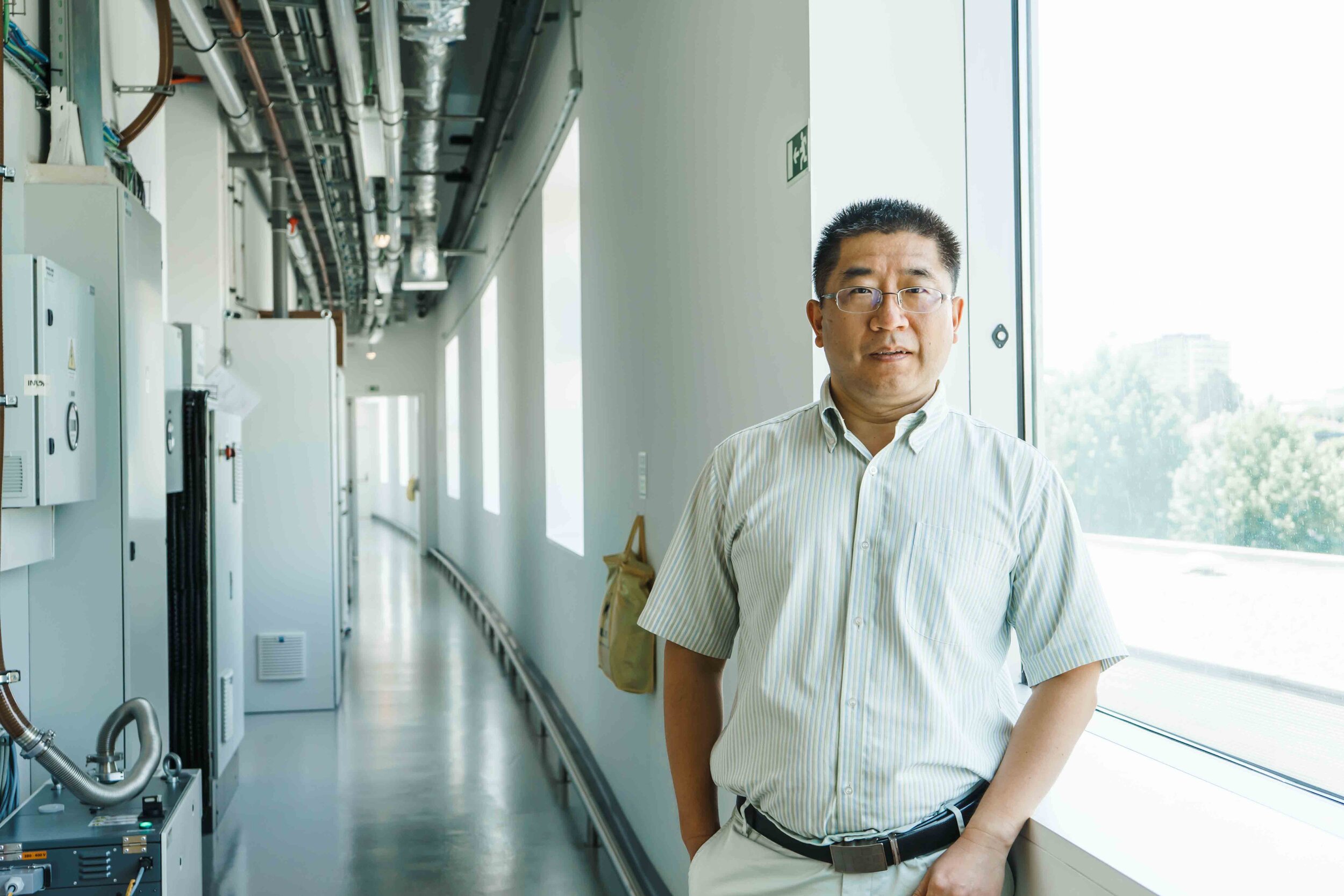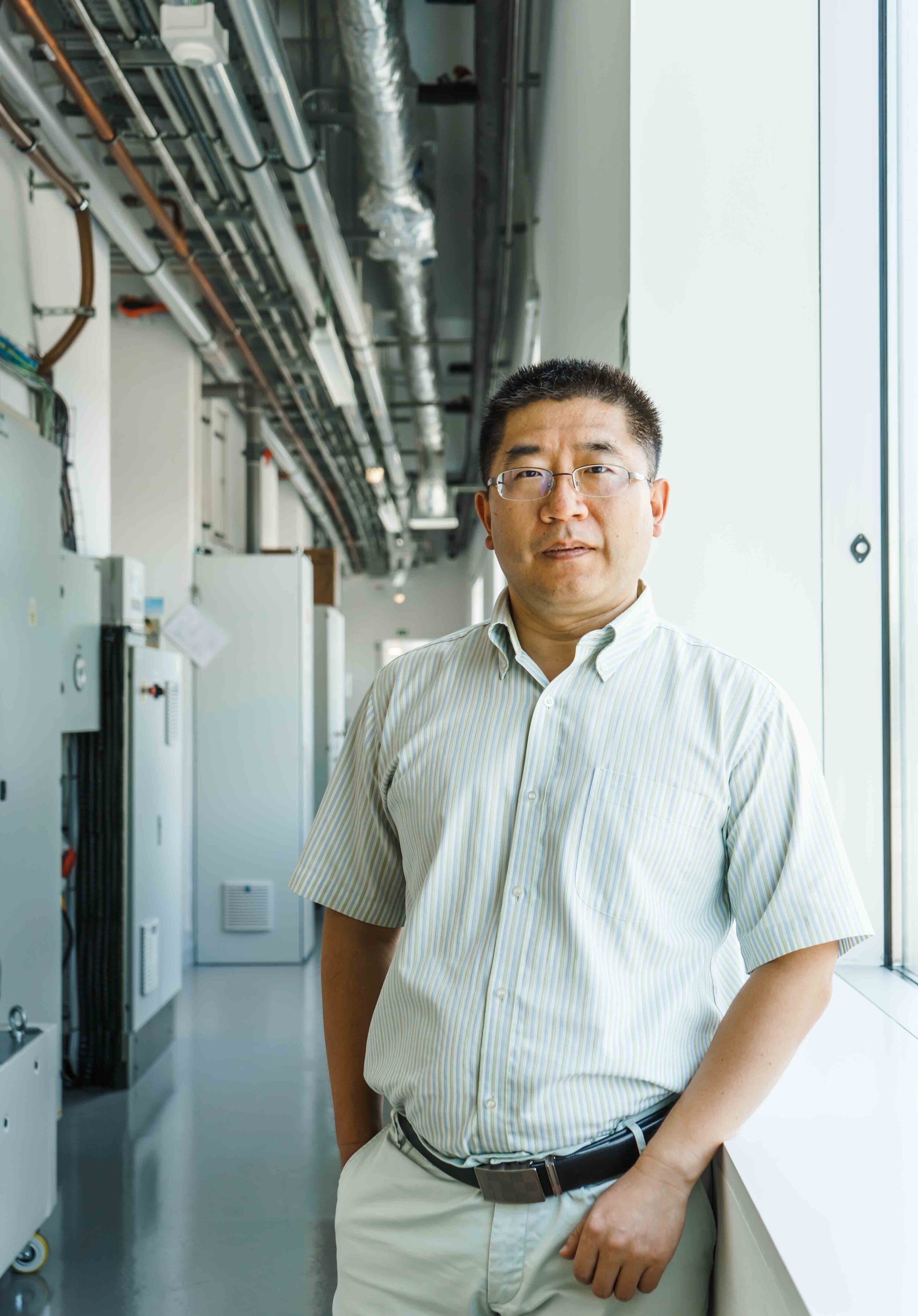
Interview with Lifeng Liu, INL Group Leader
July 30, 2020
Lifeng Liu is currently the Leader of the Nanomaterials for Energy Storage and Conversion (NESC) group at INL. Dr. Liu focuses his research on the development of new nanostructured materials and their applications in electrochemical energy storage and conversion including water splitting, solar fuel production, lithium-/sodium-ion batteries, and supercapacitors.
Received the FCT Investigator Grant in 2014, Young Investigator Award in 2015 by the Portuguese Electrochemical Society, and the Scientist Medal 2018 by the International Association of Advanced Materials (IAAM) and the “Emerging Investigator 2019” by RSC journal “Chemical Communications”
At INL since 2011, how was your journey before arriving here and what were the most important projects you’ve worked in?
My research career began in 2002, when I joined Prof. Sishen Xie’s group at the Institute of Physics, Chinese Academy of Sciences (IoP-CAS) – the top-ranking research institute in the field of Condensed Matter Physics and Nanoscience in China at that time – where I obtained my Master degree in 2004 and the PhD degree in 2007. Both my Master and PhD theses are concerned about one-dimensional nanomaterials and their physicochemical properties. After finishing my PhD, I went to Germany joining the Max Planck Institute of Microstructure Physics (MPI-Halle) as a postdoctoral researcher. Two years after, I was promoted to Group Leader and Staff Scientist. I worked at MPI-Halle for almost four years before joining INL, and my interest in energy-related materials and energy storage and conversion devices can also date back to that period.
I had by far participated in a number of externally funded projects. The most important ones, I would say, were the FCT Investigator grant and the CritCat project. The former supported me for five years and allowed me to consolidate my research on electrochemical energy storage and conversion, and the latter was the first EU project I’ve worked in, which enabled me to work jointly with other EU partners and expanded my research network on an EU-wide.
How did the NESC group start and how does the group correlates with INL’s Research Strategy?
The NESC Group was created in 2011 at the time I joined INL. Based on my previous extensive research experience in nanomaterials electrochemistry and the perception that electrochemical energy storage and the conversion will become increasingly important to the society, the Group has been focusing its research activities on the development of new materials that can improve the overall performance of water electrolyzers, fuel cells, rechargeable batteries and supercapacitors. These constitute the current two major research lines of the Group, namely, advanced electrocatalysts for energy conversion and advanced electrode materials for energy storage.
“Energy” is one of the prior research areas of the INL. The NESC group has been focusing on the applications of advanced materials in batteries and hydrogen technology, which aligns entirely with the INL’s Research Strategy. It is worth mentioning that batteries and hydrogen technology have recently received a strong political push from both the European Commission and the Portuguese government, which offer us an excellent opportunity to move forward along these R&D&I lines in the coming decade.
Hydrogen is currently enjoying unprecedented momentum, how is NESC scaling up its value?
The NESC group is committed to creating economic values for INL through IP protection and licensing. The Group has so far been granted two patents on water electrolysis for hydrogen production. In addition, the Group is keen to collaborate with industrial partners, either jointly working on RTD or providing companies with high-quality services and technical support. The Group has now active collaboration with leading players in the field of hydrogen technology including BASF and Ballard Europe, as well as SMEs such as Syngaschem and Amnis Pura.
Besides, Hydrogen Technology has now also become a strategic research topic of the INL’s Clean Energy Cluster. The NESC group will work closely with all other INLers who are willing to contribute to the R&D&I along the hydrogen value chain, making INL become a well-recognized RTO in this field.
Briefly, what excites you about your work?
The desire for discovering new materials and devices, for gaining a deep understanding of the new science behind electrochemical energy storage and conversion, and more importantly for making our world cleaner and our lives greener.




